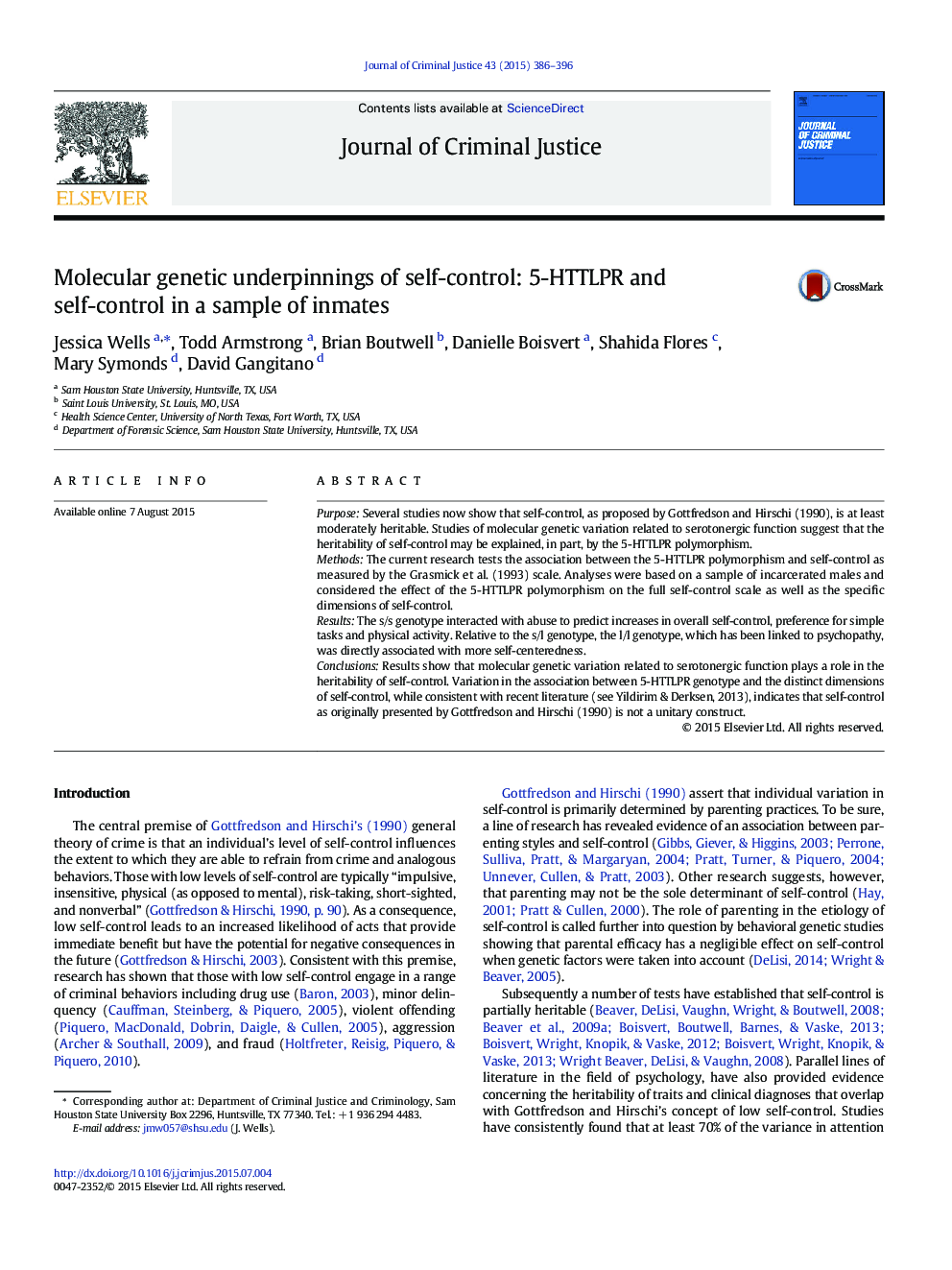| Article ID | Journal | Published Year | Pages | File Type |
|---|---|---|---|---|
| 882681 | Journal of Criminal Justice | 2015 | 11 Pages |
•Effects of 5-HTTLPR and childhood abuse on self-control were examined among inmates.•The s/s genotype interacted with abuse to predict lower overall self-control.•The l/l genotype was associated with increased self-centeredness.•Results suggest 5-HTTLPR genotype differentially effects self-control dimensions.
PurposeSeveral studies now show that self-control, as proposed by Gottfredson and Hirschi (1990), is at least moderately heritable. Studies of molecular genetic variation related to serotonergic function suggest that the heritability of self-control may be explained, in part, by the 5-HTTLPR polymorphism.MethodsThe current research tests the association between the 5-HTTLPR polymorphism and self-control as measured by the Grasmick et al. (1993) scale. Analyses were based on a sample of incarcerated males and considered the effect of the 5-HTTLPR polymorphism on the full self-control scale as well as the specific dimensions of self-control.ResultsThe s/s genotype interacted with abuse to predict increases in overall self-control, preference for simple tasks and physical activity. Relative to the s/l genotype, the l/l genotype, which has been linked to psychopathy, was directly associated with more self-centeredness.ConclusionsResults show that molecular genetic variation related to serotonergic function plays a role in the heritability of self-control. Variation in the association between 5-HTTLPR genotype and the distinct dimensions of self-control, while consistent with recent literature (see Yildirim & Derksen, 2013), indicates that self-control as originally presented by Gottfredson and Hirschi (1990) is not a unitary construct.
